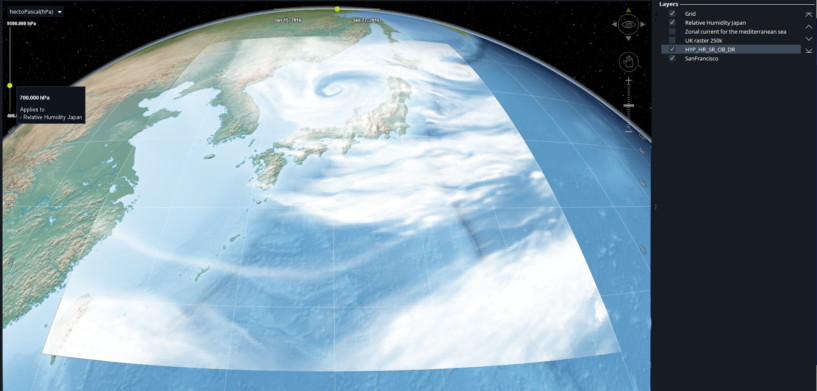 Any developer will tell you that testing (and more testing) is a critical part of launching a new product or solution.
Any developer will tell you that testing (and more testing) is a critical part of launching a new product or solution.
Luciad Portfolio R&D Director Robin Houtmeyers recently lent his testing skills to the Open Geospatial Consortium – an international standards organization aimed at making geospatial information findable, accessible, interoperable, and reusable.
Robin participated in a 2-day sprint to test and refine a candidate standard for the benefit of the geospatial and location intelligence community. Here’s what he had to say about the experience.
Q: You recently participated in a 2-day virtual sprint to test and refine the OGC API – Tiles candidate standard. What was the experience like, and why did you choose to participate?
A: It was nice to be part of this event, as it is an ideal opportunity for an implementer like Hexagon to test early versions of an upcoming OGC standard. Essentially, the OGC API – Tiles standard is a simple method to serve any tiled resource over the web. We were able to try out use cases with the standard that are important for our products and users and directly share feedback with other participants and the people behind the standard.
For instance, an important use case for the Luciad Portfolio is to be able to filter tiles in multiple dimensions that go beyond a 2D location, such as time, depth, pressure, and so on. So, we looked at how this could work with the OGC API – Tiles candidate standard.
Q: Who were some of the other participants in the sprint, and what were you able to accomplish together?
A: The sprint had almost 40 participants, with people from OGC, the event sponsor Ordnance Survey, and various companies and organizations, such as UAB CREAF, Ecere, Interactive Instruments, Azavea, GeoSolutions, and Skymantics. Although there were some suggestions from OGC, each participant was free to experiment with any part of the specification; some focused on a client, some provided a service, and a few – like Hexagon – did both.
This resulted in a good mix of client and service implementations, making it possible to not only test the standard, but also look at interoperability between different parties. With a total of nine demonstrations at the end of the sprint, I’d say the biggest accomplishment is that we showed that the standard provides a solid basis for implementations and future extensions.
Q: How were Hexagon’s LuciadLightspeed and LuciadFusion solutions used in the sprint?
A: LuciadLightspeed and LuciadFusion were respectively used for a client and service implementation of the OGC API – Tiles standard. Both products offer a modular, open architecture with a flexible API, making them ideally suited to rapidly develop applications and web services. The LuciadFusion-based service specifically focused on the ability to filter map tiles in multiple dimensions, such as time and pressure, and on delivering map tiles in custom projections. The LuciadLightspeed-based client additionally focused on interoperability with other service providers, an important aspect of the standardization effort.
I am particularly proud that we demonstrated an extension to support multi-dimensional data filtering, which is important for measurement data like weather information. The LuciadLightspeed demonstration showed this in practice as a client that was able to visualize temperature and relative humidity data over time and on different altitudes.
Q: Can you talk about how current OGC standards are supported by the Luciad Portfolio and why that’s significant?
A: Hexagon is a long-time OGC principal member and implementer of many of its geospatial standards. The Luciad Portfolio currently includes over 30 implementations of OGC standards, ranging from classic geospatial web services such as WM(T)S or WFS, data and styling standards such as SLD, GeoPackage, KML, and NetCDF, and the state-of-the-art 3D Tiles standard. We extensively rely on all these standards to represent and exchange geospatial data, as they not only address important geospatial use cases but also make it possible to seamlessly integrate in existing geospatial architectures.
We also highly value OGC’s compliance tests, as they focus on the importance of interoperability. If you have an OGC-compliant client and service from different parties, you know that integration will be very easy.
Q: The OGC mentioned in a blog that the OGC API – Tiles candidate standard is designed to be as developer-friendly as possible, with the aim of being usable by a broader audience than the “traditional geospatial” crowd. The same could be said about many of Hexagon’s Geospatial division’s technologies. Can you talk about how creating developer-friendly and flexible technology is prioritized by the Luciad Portfolio development team?
A: Similar to a geospatial standard, a good developer experience is essential for the Luciad Portfolio’s software components. Our users are developers who create solutions which are tailored to the needs of their customers and built on top of our components. To have a successful onboarding, a developer needs to be able to quickly grasp how the components work and how they can be customized towards a set of user requirements.
The team behind the Luciad portfolio perfectly understands this and realizes this through a variety of measures – ranging from peer reviews between development teams and extensive customer beta programs to the possibility for developers to directly contact the Luciad Portfolio development teams.
Q: The OGC also said the sprint proved that the draft OGC API – Tiles specification has reached a stage of maturity where it is implementable and developer friendly. How do you see this standard being implemented in technologies across the industry?
A: OGC is making a major leap by introducing the OGC API family of standards. They directly build upon the powerful legacy of the existing OGC web service standards, but they take full advantage of modern web developer practices and have a major focus on developer experience. The OGC API – Tiles specification is the first one of this family to be released.
Thanks to OGC’s continued effort to collaborate and prototype in various initiatives, they did not only achieve the result of having an implementable and developer-friendly standard, but they also paved the way for a good adoption in the industry upon its final release. As such, I expect to see several implementations ready from the start, which will accelerate its adoption and eventually the replacement of the existing OGC web service standards.
Q: Will Hexagon be participating in similar events in the future? If so, what are they?
A: Yes, because they provide a great forum for implementers to review and test candidate standards. Next to joining sprints like this, we also frequently participate in the OGC Testbed, an annual research and development program that explores geospatial technology from various angles. Such an event runs for several months, giving participants the chance to deeply explore existing and upcoming geospatial standards with real-world use cases.
We currently participate in OGC Testbed 16, in which we collaborate with the Federal Aviation Administration and other participants to explore the related OGC API – Features standard for serving and accessing aeronautical features like airspaces and flight plans.
Thanks for sharing, Robin!
Keep up with the latest developments from Robin and the Luciad Portfolio team on our website.















